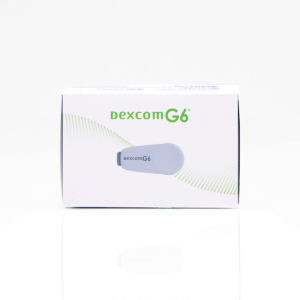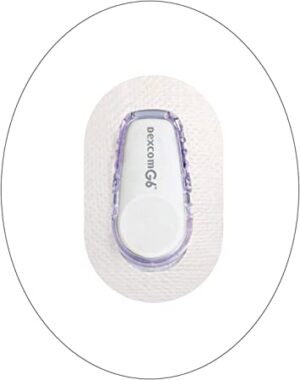Overview of Dexcom G6 Sensor
The Dexcom G6 Sensor is a continuous glucose monitoring (CGM) system that allows people with diabetes to track their glucose levels in real-time. The system includes a sensor that is worn on the skin and a separate receiver that displays the glucose readings. The sensor uses a small filament that is inserted just under the skin to measure glucose levels in the interstitial fluid. The sensor can be worn for up to 10 days and provides real-time glucose readings every 5 minutes. The receiver can be paired with a smartphone or other device to display the data and allow for easy tracking and data sharing with healthcare providers.
Additionally, the Dexcom G6 sensor allows for remote monitoring, so that caregivers and loved ones can also check glucose levels remotely.
Traditional Glucose Monitoring Methods
Traditional glucose monitoring methods for people with diabetes typically involve using a finger stick device to obtain a small drop of blood, which is then applied to a test strip. The test strip is inserted into a glucose meter, which provides the individual’s blood glucose level. This method is commonly referred to as “self-monitoring of blood glucose” (SMBG) and is usually done multiple times a day.
Another traditional method is known as the “A1C test”, it measures average blood glucose levels over the past 2–3 months by measuring the amount of hemoglobin in the blood that has been glycosylated (hemoglobin A1C).
Both methods have their advantages and disadvantages. Finger stick testing provides real-time glucose readings, but it can be painful, and it requires a significant number of test strips, lancets, and glucose meters. On the other hand, A1C testing is performed less often, and it requires fewer supplies, yet the method only provides an average glucose level reading and does not reflect real-time data.
Benefits of the Dexcom G6 Sensor
The Dexcom G6 sensor offers several benefits over traditional glucose monitoring methods, including:
Continuous monitoring: The G6 sensor provides continuous glucose readings every 5 minutes, allowing for more accurate and up-to-date information about the individual’s glucose levels. This can help people with diabetes better manage their condition and take precautions when their blood sugar level fluctuates.
Ease of use: The G6 sensor is easy to insert and wear, and the separate receiver provides clear and accessible glucose readings. Furthermore, the receiver can be paired with a smartphone or other device for added convenience.
No fingerstick calibration: The G6 sensor doesn’t require fingerstick calibration, implying less pain and fewer supplies are needed.
Remote monitoring: The G6 has a remote monitoring feature. This gives caregivers and household members access to the glucose levels of the individual even at a distance, so they can offer support when required.
Alarms and alerts: The G6 sensor can send alarms and alerts to the receiver or a paired device if the glucose levels are too high or too low, providing an additional level of safety for people with diabetes.
Data tracking: The G6 sensor allows for easy data tracking and sharing with healthcare providers, which can help improve diabetes management and treatment.
Overall, the Dexcom G6 Sensor offers a more convenient, efficient, and accurate method of monitoring glucose levels for people with diabetes.
Cost Comparison of Dexcom G6 Sensor vs Traditional Glucose Monitoring Methods
The cost of the Dexcom G6 sensor and traditional glucose monitoring methods can vary depending on a person’s insurance coverage and other factors. However, in general, the cost of the Dexcom G6 sensor may be higher than the traditional glucose monitoring methods.
The price of the Dexcom G6 sensor includes the price of the sensor as well as the transmitter and receiver. The sensor must be replaced every 10 days, and the Dexcom G6 transmitter and receiver must be replaced every 12 months. There is also a monthly fee for using the sensor.
On the other hand, traditional glucose monitoring methods, often include the purchase of a glucose meter, test strips, and lancets. The price of these goods varies according to the brand and amount ordered. Depending on the frequency of testing, test strips, and lancets must be replaced regularly, which can mount up over time.
Furthermore, the A1C test is typically administered at a lab or clinic, and the cost varies depending on location and insurance coverage.
Overall, while the initial cost of traditional glucose monitoring methods may be lower than the Dexcom G6 sensor, the current cost of supplies and frequent testing can add up over time and might eventually cancel out the price difference. Additionally, the benefits of continuous monitoring and ease of use provided by the Dexcom G6 sensor can offset the cost for many people with diabetes. It’s recommended to check with the insurance company and consult with the healthcare provider to understand the cost coverage and to make the best decision.
Factors Affecting Cost-Effectiveness of Dexcom G6 Sensor
1. Insurance coverage: Insurance coverage is a major factor affecting the cost-effectiveness of the Dexcom G6 Sensor. Depending on the specific insurance plan, the cost of the sensor may be covered in full or in part. Individuals need to check with their insurance providers to determine what coverage is available for the Dexcom G6 Sensor.
2. Discounts: Discounts provided by Dexcom and other vendors may potentially have an impact on the Dexcom G6 Sensor’s pricing. Individuals should check with their healthcare provider or insurance provider to determine whether they qualify for any discounts.
3. Location: The cost of the Dexcom G6 Sensor may vary depending on the location of purchase. Prices may be higher in certain areas, such as rural areas or areas with high demand for the sensor.
4. Number of sensors purchased: Purchasing multiple Dexcom G6 Sensors at once can result in cost savings. The more sensors purchased, the lower the cost per sensor.
5. Durability of the sensor: The cost-effectiveness of the Dexcom G6 Sensor is also affected by its durability. The longer the sensor lasts, the less expensive it is.
Challenges with Using the Dexcom G6 Sensor
One of the main challenges with using the Dexcom G6 Sensor is the accuracy of the data. While the device is highly regarded for its accuracy, it is not 100% accurate. Additionally, the sensor may be prone to false readings, especially if the user is engaging in activities that are more likely to impact the readings, such as exercise or eating. Another challenge is the fact that the sensor needs to be replaced every 10 days, which can be costly for users who are not covered by insurance. Finally, some users may experience skin irritation or allergy to the adhesive used to attach the sensor to the body.
Conclusion
The Dexcom G6 Sensor is an innovative and revolutionary technology that has redefined the way people with diabetes monitor their blood sugar levels. Its easy-to-use mobile app feature allows users to readily track their blood sugar levels. All in all, the features of the G6 Sensor are much more comprehensive than traditional glucose monitoring methods, providing users with a more accurate and detailed picture of their blood sugar levels.



